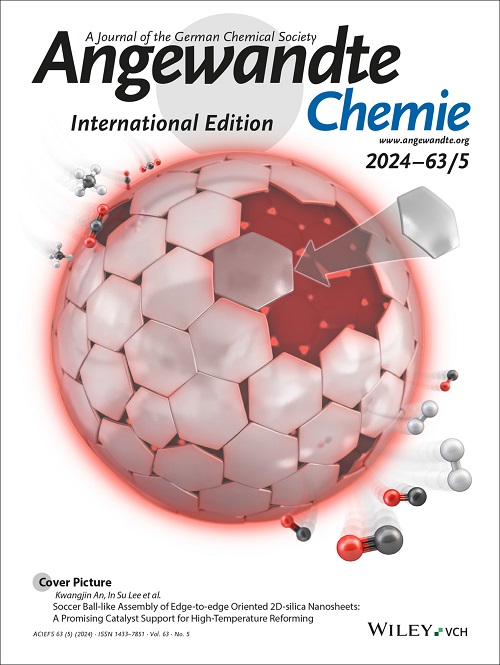Decoding Variants of Pyrite, Arsenopyrite and Marcasite Using an Electron Counting Rule
IF 16.1
1区 化学
Q1 CHEMISTRY, MULTIDISCIPLINARY
引用次数: 0
Abstract
Pyrite, Marcasite and Arsenopyrite are of significant historical and contemporary interest. Compounds adopting these structure types are extensively studied for their crystallographic properties and potential applications in energy storage and conversion. Despite numerous investigations since the 1970s, understanding the chemical behaviour of Pyrite, Marcasite, and Arsenopyrite remains limited. This study proposes a new structure determining electron (SDE) rule to systematise these compounds without relying on formal charge assignments. The SDE rule predicts structure types based on the distribution of non-localised electrons around transition metals, providing a clear framework for identifying and categorising related compounds. We observe good agreement with literature data and furthermore synthesised nine new compounds within the Pt/Ir-Ge-As/Sb systems, demonstrating the applicability of SDE. Our findings reveal that these new compounds have layer configurations of Pyrite (P), Marcasite (M) and Arsenopyrite (A), enhancing our understanding of their chemical diversity. This work not only categorises existing compounds, but also paves the way for future exploration of new materials, highlighting the greater structural potential of P, M, A-related compounds beyond traditional frameworks. Preliminary results indicate that the type of layers influences physical properties, such as electrical conductivity, warranting further investigation into the relationship between structure and function in these compounds.求助全文
约1分钟内获得全文
求助全文
来源期刊
CiteScore
26.60
自引率
6.60%
发文量
3549
审稿时长
1.5 months
期刊介绍:
Angewandte Chemie, a journal of the German Chemical Society (GDCh), maintains a leading position among scholarly journals in general chemistry with an impressive Impact Factor of 16.6 (2022 Journal Citation Reports, Clarivate, 2023). Published weekly in a reader-friendly format, it features new articles almost every day. Established in 1887, Angewandte Chemie is a prominent chemistry journal, offering a dynamic blend of Review-type articles, Highlights, Communications, and Research Articles on a weekly basis, making it unique in the field.

 求助内容:
求助内容: 应助结果提醒方式:
应助结果提醒方式:


